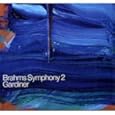 I love to hear live music - you'll almost always find me at a concert (I've been the guy with the mohawk at classical events this fall, winter and part of the spring) whenever I can go.
I love to hear live music - you'll almost always find me at a concert (I've been the guy with the mohawk at classical events this fall, winter and part of the spring) whenever I can go.This weekend I heard one of my favorite ensembles, the San Antonio Symphony in a program of Bartok and Brahms. The soloist was Sarah Chang, who signed cds at Antonio Strad Violins Thursday afternoon as well as at the concerts.
It was wonderful to meet Sarah and to hear her live. What was not so wonderful was how she moved. Really. It was one of the oddest things I've witnessed in a concert. She paced, kicked (perhaps the most distracting with her gown), and continually came close to hitting the conductor - principal 2nd violinist - and the first stand of 1st violins. Add wildly releasing her bow after certain passages and you end up with very odd choreography with one of the monumental violin concertos. Ultimately it was disappointing and distracting, from the music and her performance.
During the Bartok Concerto for Orchestra the house lights were left on (sort of the opposite of Earth Hour?) and was also a lackluster interpretation from Andrew Grams. Three concertgoers behind me also insisted on talking during the entire work. I asked them at intermission to please refrain from doing so, that it is rude to other people there to listen to the music to speak except in between movements or after the work is over.
Be sure to check out the San Antonio Symphony this week with maestro Chosei Komatsu, joined by Roger Wright, piano (2003 San Antonio International Piano Competition Winner) in a program including Gutiérrez: Improvisation for Strings; Rachmaninoff: Piano Concerto No. 3; and Dvořák's Symphony No. 6.
But I will ask one thing - okay - two things: 1) Please don't talk during the music.
2) Only give a standing ovation if you are so moved by the music and performance that you are forced to leap to your feet as soon as the music is over. Standing ovations mean nothing anymore because they happen all the time. Everything gets a standing ovation from everyone. Be different, don't do it because everyone else is...make it something special - when you HAVE to get up and says thanks, by applauding and yelling and hopping up...not just getting up because someone else did.
John Clare, Classical Spotlight & KPAC afternoon host
Did you hear the concert - what did you think? Are you someone who believes in applauding no matter what, or ever been tempted to "boo" a performance? Let us in know in the comments section!





 The Mikado with San Antonio Opera, dress rehearsal Thursday morning...
The Mikado with San Antonio Opera, dress rehearsal Thursday morning...












